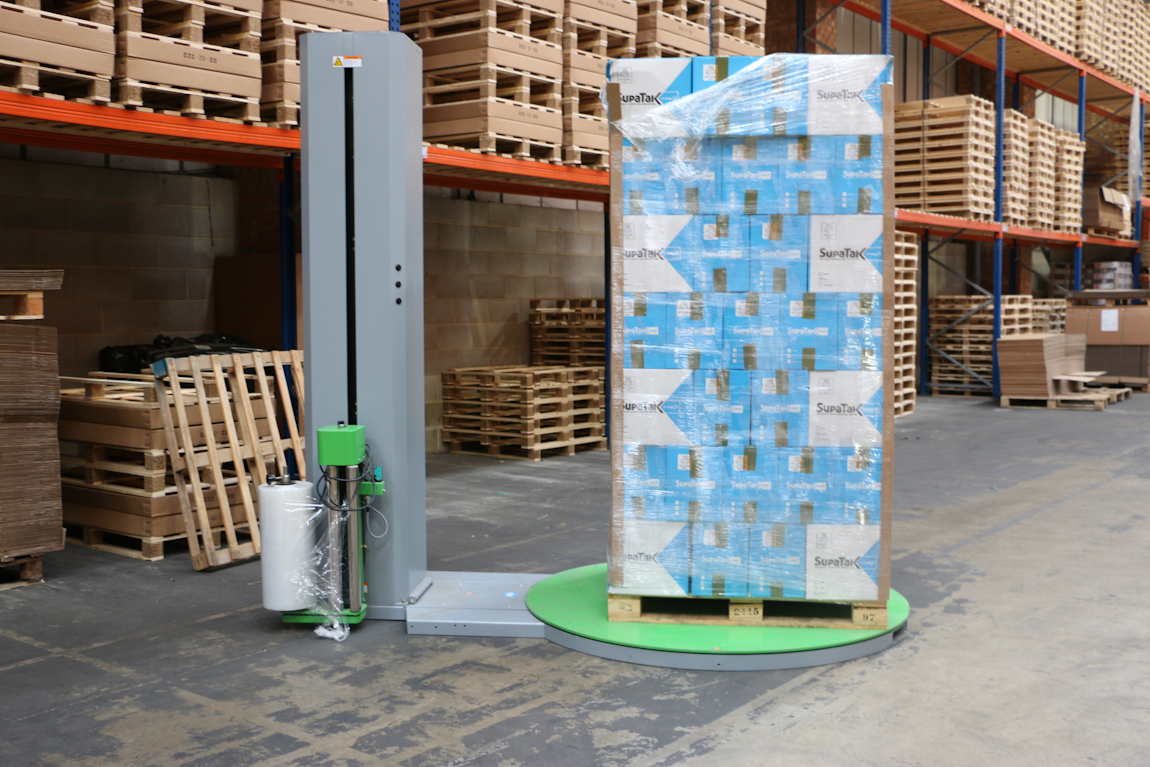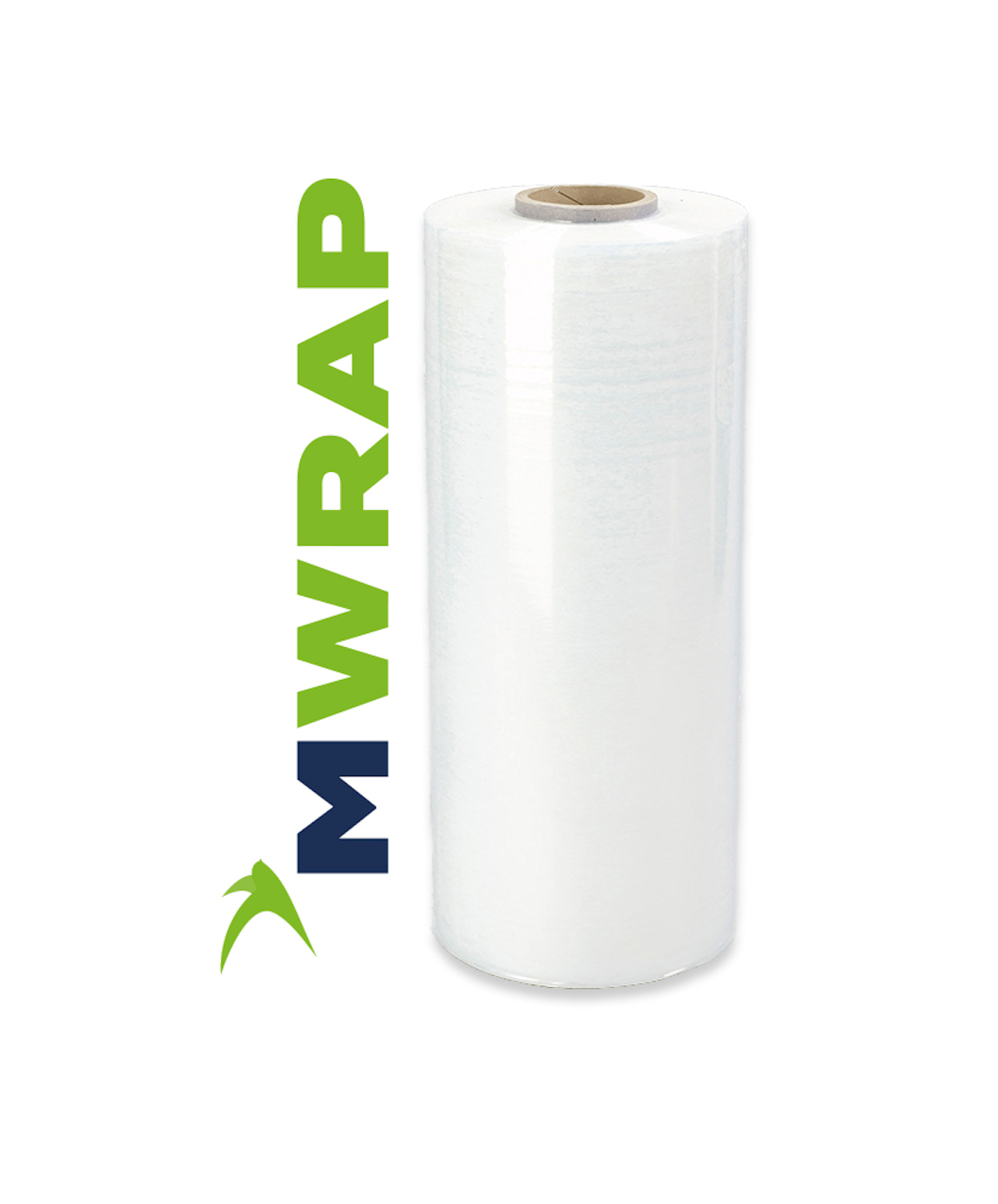The Complete Guide to Stretch Wrap (updated 2023)
Stretch Wrap is a product used to secure goods on a pallet for storage or transportation by simply wrapping a stretchable plastic film around the products. But are you aware of the different types and their purpose?
In this article, we will be explaining the benefits of stretch wrap and which types you can be using to improve your packaging operations
What is Stretch Wrap?
So, let us start with the most obvious question, what is stretch wrap? Stretch Wrap is a thin, stretchable plastic film that is often made from polyethylene. It is used to lock and secure products onto a pallet. The stretch film is wrapped around the pallet, applying tension, and enabling the film to extend its length, creating a force that allows it to be held in place. Stretch-wrap can also be recycled but be sure to check that your recycling centre accepts soft plastics.
The Benefits of Stretch Wrap
Stretch Wrap is generally used to reduce problems that can occur during transit including product damage, tampering, and loss. It also comes in a variety of thicknesses, widths, and formulations so that it can secure and protect a variety of product sizes. Some of the biggest benefits of using stretch wrap are:
- It minimizes the chances that boxes are contaminated or interfered with.
- Protects the product inside from any damage, dust, or moisture.
- Prevents any injuries that can occur when products are not securely fastened together.
- Increases stack height when used in conjunction with edge guards, creating a higher pallet load and maximising your cube space.
- Keeps packages clean and dry, ensuring customers are happy.
Stretch Wrap can be applied in three ways: manually, semi-automatically, and automatically. However, managing your loads manually can be time consuming and physically demanding, sometimes causing repetitive strain injuries. At Swiftpak, we recommend using semi-automatic or automatic machines to avoid this occurrence. The difference between using machine wrap compared to hand wrap can be seen in this video.

The Different Types of Stretch Wrap
There are many different types of stretch wrap and they are all suitable for addressing specific needs depending on load size, performance requirements and budget.
- Pre-stretch film: pre-stretching involves stretching the film during manufacture, this process can increase film strength, improve load stability, reduces waste, and saves on stretch packaging costs. Can be used with stretch wrap machines as well as manual application operations for much faster wrapping.
- Cast Stretch film: provides a smooth surface with excellent optics, gloss, strength, and cling without additives. It is a strong film that sticks only to itself to prevent products on pallets from moving while in transit. This pallet wrap is popular in the food industry with it being very versatile.
- Blown Stretch film: manufactured by a process known as blown extrusion, blown stretch films are typically used for heavier, irregular loads and applications requiring excellent puncture and tear resistance. They tend to create more noise when the reels unwound.
The Different Types of Application
- Machine stretch film: designed to be applied with a stretch wrap machine, it provides may advantages including faster and more efficient wrapping, reduced packaging material costs, safer application and more secure loads.
- Hand Applied Stretch film: our hand applied stretch wrap includes standard cast film, standard blown film, pre-stretched film, coloured film and dispensers.

Our bestseller in stretch wrap is Machine Applied Stretch Wrap (MWrap). It utilises the latest technology in film production by providing reinforced, stronger film that is thinner than conventional micron measured films. MWrap provides durable, reliable, and easy wrapping of your pallets. Discover if you are using the right stretch wrap by using our stretch wrap calculator and see if you could be saving costs and plastic.
Hand-held stretch wraps
Hand-held stretch films are used for manual stretch wrap packaging applications. As a result, hand film rolls are lighter and smaller than machine film rolls to make the application process easier. Hand stretch film is commonly used by companies who wrap small volumes of products.
Some tips for using hand-held stretch films are as follows:
- Always place the outside of the film to the surface of the pallet.
- Secure the stretch film to the pallet before wrapping by tying it to the pallet base.
- Always ensure the film covers the base of the pallet and the bottom layer of the load.
- Wrap the bottom of the pallet at least twice to secure the load.
- Overlap the film by 30 to 50%.
- Depending on the weight of your load, consider wrapping the pallet twice.
- To increase strength, use the film horizontally to create a "strap"
Selecting the best stretch wrap for your requirements
The right stretch wrap for your business depends on what products you are trying to wrap. When selecting the best stretch film, you should consider the following:
Performance
Selecting a stretch film that provides the right yield strength and performance for the loads being wrapped is crucial. The yield strength denotes the amount of stress a stretch film can withstand without permanently having plastic deformation. Prior to reaching the yield point a stretch film will elastically deform but return to its original shape once the stress is removed.
Overlapping
This is a technique for covering the top of your pallet using polythene top sheets. This protects your products and provides a downward force on the pallet load. When overlapping hand applied films, it is recommended users allow up to a 50% overlap. If using machine applied films, users should allow a 50mm overlap, regardless of the film width.
Banding
This refers to applying multiple wraps of stretch film to a particular area of a pallet to reinforce the load or band multiple units together.
Neckdown
This happens when a film loses its dispensing roll width and narrows down while being stretched. Neckdown reduces the coverage each wrap provides thereby making it likely that more wrap rotations and more film will be needed to wrap a load or pallet.
Products
Consider the products being wrapped, also look at the weight load (typically per pallet), the load profile as described below, and the transit process the load will experience.

Time, Use and Cost Use
Hand wrapping is best suited for smaller or sporadic stretch film wrapping requirements. For example, if you are moving home or office, hand wrapping with stretch wrap will be more than adequate. For a closer look on how to best plan your home or office move, here is the ultimate moving guide.
Alternatively, introducing machine wrapping may ultimately save time, resources, and packaging materials.
Stretch wrap products & plastic usage
Whilst there’s no denying the effectiveness of stretch wrap and how it’s used to protect various shipments worldwide, the use of its plastic materials is worth mentioning.
As one of the most widely used packaging products, stretch wrap is a huge contributor to the plastic waste that occurs in the packaging industry – a problem that you may be aware of given the introduction of plastic packaging tax.
Fortunately, though, businesses can continue to use such an important solution without having to suffer the consequences of plastic packaging tax.
Clear Cast Film is an eco-friendly stretch wrap combined with outstanding performance. It’s made from 30% recycled materials for PPT compliance, helping operations stay cost-efficient without compromising on performance.
How to properly store stretch wrap
To ensure the longevity and effectiveness of your stretch wrap solution, it's important to store it properly. Here are some tips for storing stretch wrap:
- Keep it in a cool, dry place: Stretch wrap is made of plastic and can be sensitive to heat and humidity. It's best to store it in a cool, dry place to prevent degradation of the material.
- Avoid direct sunlight: Exposure to sunlight can cause the stretch wrap to become brittle and lose its elasticity. To prevent this, store it in a place away from direct sunlight.
- Use a stretch wrap dispenser: Using a stretch wrap dispenser can help you use the material more efficiently and prevent damage to the wrap. It also makes it easier to store the wrap neatly.
- Keep it away from chemicals: Stretch wrap can be sensitive to chemicals, so it's important to store it away from any chemicals or solvents that could potentially damage it.
By following these tips, you can ensure that your stretch wrap remains in good condition and can be used effectively to protect your items during storage or transport.
To wrap things up
Stretch Wrap comes in a variety of widths and thickness, making it the perfect solution to ensure your products remain protected during transit, reducing the chances of damage, tampering and loss. It also helps to prevent worker injuries from occurring as it holds the items secure.
Are you using the right stretch wrap for your operations? Take the quiz now to see if you could be reducing costs and plastics. Alternatively, book your free stretch wrap trial today with our packaging experts.